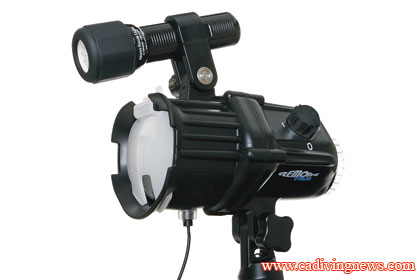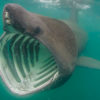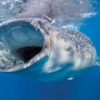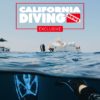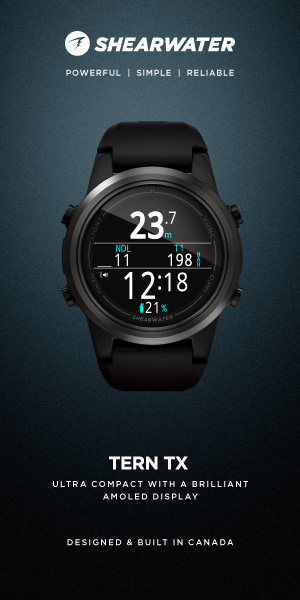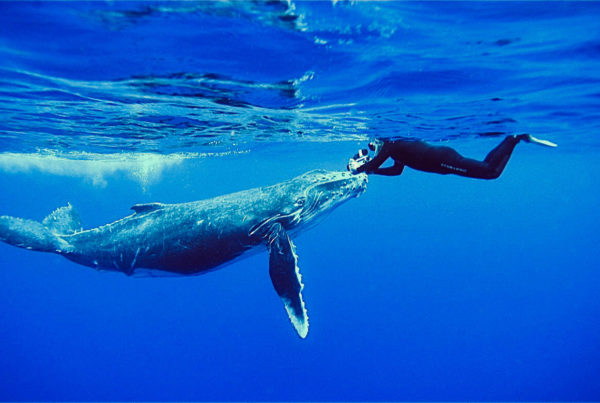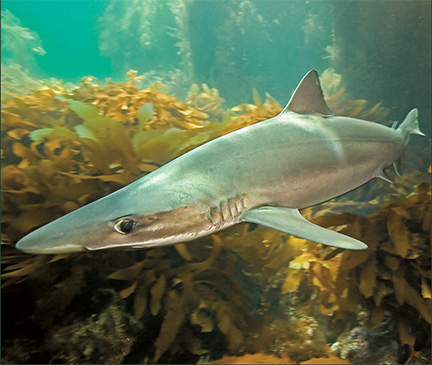Have you taken the jump into underwater photography with a compact point-and-shoot camera and underwater housing? Or perhaps you are considering this as an inexpensive option for getting into underwater imaging. It is a good choice. With a point and shoot camera you can become familiar with basics of composition, exposure, approaching marine life, etc. But you will find as you grow in skills the point and shoot camera has limitations. To overcome these limitations and grow as a photographer at a much more accelerated pace, three key accessories will be helpful in your underwater photo excellence and versatility.
Supplemental External Strobe:
As light travels through water, red and yellow is filtered out. In as little as 10 feet of water a significant reduction in color takes place. While the strobe (flash) on your camera can compensate slightly for this, the power for this flash is very limited and generally not effective any more than just two or three feet.
Solution to this problem is a larger, more powerful supplemental external strobe that can provide much better color on subjects as far away as eight feet. These strobes are generally inexpensive and usually are run by ordinary alkaline batteries (although you will find that rechargeable NiMH batteries work best). Some of these are made by the same manufacturer as the camera, others from independent makers. They both seem to work just as well. All of them work as a “slave,” meaning that when the small flash on your camera fires, the supplemental strobe instantaneously senses this and fires itself providing the extra light needed for the exposure. Many of these strobes use a non-electronic fiber-optic sync cord to assure the firing of the strobe. Some work with the strobe in calculating the exposure (through The lens metering or “TTL”). Check out all the features before you make a purchase. Often manufacturers and retailers will bundle the auxiliary strobe or strobes with the camera and mounting tray and arms for a complete matching unit that will work most effectively at the best value price.
Focus Light:
A small dive light mounted on your strobe can be helpful in two ways. First, it will help you better position your strobe for maximum effect. Second, sometimes your camera will have trouble with its auto-focus feature, particularly in dim are dark conditions. Obviously, it is a must for night diving and but it is also desirable in the dim light of a kelp forest. A broad beam LED daylight light is best. By the way, some underwater flash units have modeling lights built in, but this can increase their cost significantly.
Wide-angle Lens:
For many point and shoot underwater camera rigs, a supplemental wide-angle lens is available. The wide-angle lens allows you to take in more of the underwater scene while at the same time being closer to your subject, a desirable basic underwater photo technique. A wide-angle lens will broaden your creative horizons greatly.
The simplest easiest to use supplemental wide-angle lens are those that can be easily removed and replaced even underwater. While you may sacrifice a bit of image quality, these lenses are compact and can be removed underwater to allow use of the standard or macro features of the camera.
Are you ready to move on to the next level of underwater imaging with your point and shoot camera? Master the basic techniques first and then consider a few additional tools to expand your horizons.
The strobe in the picture is a Remora Slave Flash from Fantasea. www.fantasea.com

